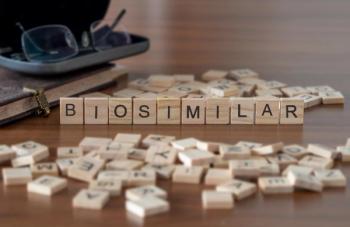
- July/August 2016
- Volume 7
- Issue 4
The Arrival of Biosimilars Signal Hope on the Horizon
THE LONG-AWAITED POTENTIAL OF BIOSIMILARS to lower drug costs and increase accessibility to specialty drugs for patients in need has finally begun to be realized in the United States.
Following the recent approvals for the first wave of US biosimilars in the first week of August, CVS released its annual drug formulary exclusion list, which dropped 2 higher-priced medications that treat cancer and diabetes. Instead, CVS plans to cover biosimilars for a large portion of drug-plan members.
The importance of this decision for patients cannot be understated: a recent study published by the Journal of General Internal Medicine found that 48% of surveyed physicians ration the amount of prescription drugs they prescribe due to high costs. The study noted that physicians are increasingly becoming rationing agents for insurance companies due to the burden of prior authorization and escalating out-of-pocket costs set up by payors.
The results of a study from the University of North Carolina at Chapel Hill revealed that specialty medications accounted for just 1.8% of drugs prescribed in 2014, yet 43.2% of total drug spending, with Humira found to be the top prescription drug contributing to commercial health plan spending. The main patent for Humira expires this year, but its manufacturer, AbbVie, created more than 70 new patents, ranging from the formulation of the drug to manufacturing methods.
This could create hurdles for the Humira biosimilar, manufactured by Amgen, which an FDA advisory panel ruled could be approved for all indications of Humira. Despite manufacturers of branded products seeking to protect their patents, it has become clear that biosimilars are here to stay in the United States.
Sandoz recently announced plans to launch 5 biosmilars of oncology and immunology drugs by 2020, including Enbrel, Humira, Neulasta, Remicade, and Rituxan. The potential of these drugs to lower costs is significant, as a report by the IMS Institute for Healthcare Informatics found that opening markets to biosimilar competition could result in a 30% reduction in cost per treatment day compared with their branded counterparts.
As we begin to see pharmacy benefit managers, like CVS, opt for less expensive biosimilars, I urge you to read the latest article in this issue from our esteemed Editor-in-Chief Dan Steiber, RPh, who notes how these decisions are helping set the stage for the growth of value-based contracting. Also in this issue, Specialty Pharmacy Times editorial board member Marc O’Connor, of Curant Health, discusses the vital role specialty pharmacy will play in achieving health outcomes in terms of the dollar amount spent.
Ultimately, these factors will play an interconnected role in lowering out-of-pocket costs and improving care to reach the ultimate end goal: improving treatment outcomes for patients across the specialty landscape.
Articles in this issue
over 9 years ago
PCSK9 Inhibitors: Who are the Best Candidates for Therapy?over 9 years ago
Managing Cold Chain Products in Specialtyover 9 years ago
Are Changes on the Horizon for Medicare Part B Reimbursement?Newsletter
Stay informed on drug updates, treatment guidelines, and pharmacy practice trends—subscribe to Pharmacy Times for weekly clinical insights.




